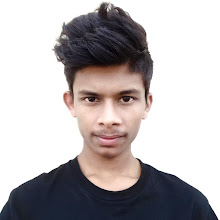With the announcement of the Nobel Prize for Physics being awarded to two researchers working in the field of quantum optics, many people are trying to get their heads around what the two men are being rewarded for. We’re sure it’s worthy but what’s it really all about?
Explanations will follow but, first, let me set the scene. We’re going to look at their success through the microcosm of quantum computers as this is one of the applications that pundits have mentioned. So, here we go…..
Normal computers process binary information – this means that something is either on or off, or in shorthand 1 or 0. British mathematician Alan Turing proved that you can do any calculation if you have enough switches that you can turn on or off. Quantum computers are being claimed as the next big thing because they take us beyond the binary and give us the capability to undertake a new kind of calculation. Quantum computers’ prowess stems from their switches, which can be both on and off at the same time. They can be put in a so-called ‘superposition’ of states.
Imagine trying to do a calculation where you wanted to try lots of different numbers to see which one was correct. In a normal computer, you’d have to try each one in turn. Advances in processor speeds have made these calculations very fast, but the trick a quantum computer can do is to try multiple numbers at the same time using the superposition of states. These make quantum computers radically faster at doing certain calculations. But there are several hurdles to creating a working quantum computer, but the work from the two Nobel Prize winners has moved us two steps closer to achieving this.
The two Nobel Prize winners have been rewarded for their measurement of activity on an atomic scale. It’s at this atomic scale, where the quantum world comes to life, that advances must be made in order to create quantum computers.
Wineland’s work involves trapping ions – electrically charged atoms - using lasers. They are trapped in order to study them. As the ions are being held very still, they don’t have much energy. When a laser pulse is aimed at one ion, the ion captures a small bit of energy. Controlling the amount of energy is crucial as the right amount of energy will put the ion into the superposition state. If there are other ions nearby they will also be affected and the superposition will be shared, or what scientist call coupled. The ability to manually place ions in this state has triggered high hopes for quantum computers and already offers us new atomic clocks of extraordinary precision, much needed for a huge range of communications and synchronization technologies.
Another advance comes from Haroche. He has created a special cavity where microwaves bounce between two supercooled (mega, mega frozen) mirrors. The microwave is very short-lived (tenth of a second). Haroche’s trick is to sense whether there is a microwave in the cavity or whether it has decayed. This is done by sending atoms of rubidium through the cavity with the microwaves. The rubidium changes ever so slightly because of the presence of microwaves. When the rubidium does change, it becomes entangled with the microwave. Entanglement means that the information about the microwave can be found out from the rubidium without disturbing the microwave. Entanglement is another technique that excites those dreaming of super powerful quantum computers.
These two have advanced our understanding of some very basic concepts of quantum physics and have helped kick off what we can hope will be a revolution in computing as the quantum world becomes clearer and clearer. You won’t be trading in your PC tomorrow for a quantum computer but Wineland and Haroche have brought us a big step closer to a new age in computing.
- Physics.Org






Dear Reader,
If you have any Question, Complain or Anything Please LEAVE A COMMENT. Thank you for Staying with my Blog.